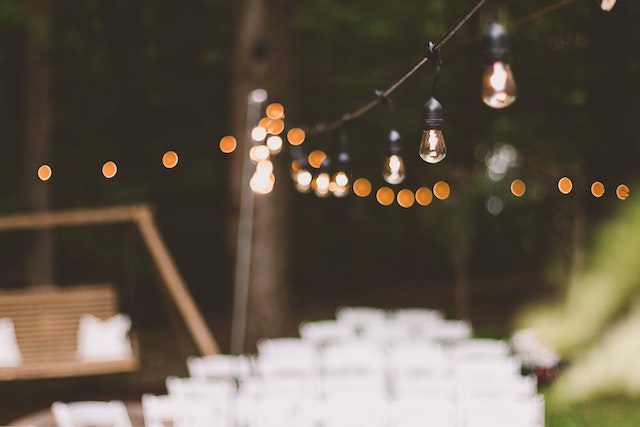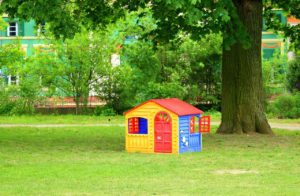In the realm of outdoor aesthetics, landscape lighting has emerged as a transformative tool that not only illuminates the darkness but also adds a touch of enchantment to the natural beauty of your surroundings. The interplay of light and shadow, strategically positioned fixtures, and the careful selection of lighting techniques can elevate your outdoor space to a whole new level, turning it into a captivating haven after dusk. This article delves into the art and science of landscape lighting, guiding you through its various aspects and providing valuable insights on how to infuse magic into your outdoor environment.
Table of Contents
Setting the Stage – Importance of Landscape Lighting
Landscape lighting is more than just a means to illuminate pathways or ward off intruders. It is an essential design element that showcases the architectural features of your home, emphasizes the textures of plants and structures, and creates captivating visual focal points. By extending the usability of your outdoor space well into the night, every property management expert notes that landscape lighting enhances safety and security while fostering an inviting ambiance for relaxation and entertainment.
Types of Landscape Lighting Techniques
1. Path Lighting
One of the fundamental aspects of landscape lighting is path lighting. It serves both practical and aesthetic purposes by guiding visitors along walkways and accentuating the beauty of your garden. Low-level fixtures such as bollards or in-ground lights can be strategically placed to define the path while creating a charming play of light and shadow.
2. Uplighting and Downlighting
Uplighting involves placing fixtures at ground level to cast light upwards, accentuating the vertical elements of trees, sculptures, and architectural features. On the other hand, downlighting from elevated positions, such as trees or eaves, creates a soft, moonlit effect that adds depth and drama to your landscape. These techniques work harmoniously to create a balanced and captivating outdoor illumination.
3. Spotlighting
Spotlighting is a technique that directs focused beams of light onto specific points of interest. This can be used to showcase statues, water features, or any unique element in your outdoor space. By isolating these features with light, you draw attention and create a sense of wonder, transforming mundane objects into captivating pieces of art.
4. Silhouetting and Shadowing
Silhouetting involves placing a light source behind an object to create a striking dark outline against a lit background. This technique is particularly effective when highlighting textured plants or architectural elements, adding a touch of mystery and elegance. Shadowing, on the other hand, casts captivating shadows on nearby surfaces, enhancing the overall visual drama of your landscape.
Selecting the Right Lighting Fixtures
Choosing the appropriate lighting fixtures is crucial to achieving your desired landscape aesthetic. Here are some popular options to consider:
LED Lighting
LED lighting has revolutionized the world of landscape illumination. These energy-efficient bulbs come in a range of color temperatures, allowing you to tailor the ambiance to your preference. LED fixtures are durable, long-lasting, and can be easily integrated into various lighting techniques. Additionally, they are compatible with smart home systems, enabling you to control and customize your outdoor lighting remotely.
Solar-Powered Lights
Solar-powered lights harness the energy of the sun during the day and illuminate your landscape at night. They are easy to install and eliminate the need for complex wiring. While they might not be as powerful as wired options, they are an eco-friendly and cost-effective choice for adding a subtle glow to your outdoors.
Incandescent and Halogen Lighting
Incandescent and halogen bulbs provide a warm and inviting glow, perfect for creating a cozy atmosphere in outdoor seating areas. However, they are less energy-efficient compared to LED bulbs and have a shorter lifespan. Proper installation and maintenance are essential to ensure their longevity and safety.
Designing with Light – Creating an Outdoor Masterpiece
Landscape lighting is not merely about illuminating spaces; it’s an art form that involves careful consideration of design principles. Here’s how you can create an outdoor masterpiece with light:
Balance and Symmetry
Achieving balance and symmetry in your lighting design helps create a harmonious and visually pleasing atmosphere. Placing lights in pairs on either side of a pathway or entrance can lend a sense of equilibrium. Similarly, balancing focal points with ambient lighting ensures a well-rounded composition.
Layers of Light
Much like interior design, outdoor lighting benefits from layers of light. Combine ambient, task, and accent lighting to create depth and dimension. Ambient lighting provides a soft overall glow, task lighting serves functional purposes like reading or cooking, while accent lighting highlights unique features.
Color Temperature and Mood
The color temperature of your light bulbs can greatly influence the mood of your outdoor space. Cooler tones, such as blue and white, evoke a modern and energetic ambiance, while warmer tones, like yellows and oranges, create a cozy and intimate feel. Consider the emotions you wish to evoke and choose color temperatures accordingly.
Maintenance and Sustainability
To ensure the longevity and efficiency of your landscape lighting, proper maintenance is essential. Here are some tips:
Regular Inspection
Periodically inspect your fixtures for any signs of damage, corrosion, or malfunction. Address issues promptly to prevent further damage and ensure consistent performance.
Cleaning
Dust, dirt, and debris can accumulate on your lighting fixtures, diminishing their brightness. Clean lenses, diffusers, and bulbs regularly to maintain optimal illumination.
Energy Efficiency
Opt for energy-efficient bulbs and fixtures to minimize your environmental impact and reduce energy costs. Timers, motion sensors, and smart controls can further enhance efficiency by regulating when and how your lights operate.
Conclusion
Landscape lighting is a dynamic and transformative tool that can breathe life into your outdoor spaces. By understanding various lighting techniques, selecting the right fixtures, and embracing design principles, you have the power to create a captivating and magical environment that enchants both you and your guests. As the sun sets and darkness falls, let your landscape come alive with the artistry of light, elevating your outdoors to a realm of beauty and wonder.
Featured Photo by Michael Morse: https://www.pexels.com/
 As a home designer, I always offer my clients the best solutions to fully enjoy their living spaces at the most affordable costs. In recent years, I also took an interest in mechanical engineering and landscape architecture. Building or remodeling a home for someone means dealing with a complicated, beautiful puzzle of aesthetics, functionality, comfort, and sustainability. When I don’t help people get the most out of interior and exterior design, I collaborate with various online outlets discussing home sustainability, green remodeling, durability, curb appeal upgrades, modern solutions to conserving energy, and, of course, comfort and beauty.
As a home designer, I always offer my clients the best solutions to fully enjoy their living spaces at the most affordable costs. In recent years, I also took an interest in mechanical engineering and landscape architecture. Building or remodeling a home for someone means dealing with a complicated, beautiful puzzle of aesthetics, functionality, comfort, and sustainability. When I don’t help people get the most out of interior and exterior design, I collaborate with various online outlets discussing home sustainability, green remodeling, durability, curb appeal upgrades, modern solutions to conserving energy, and, of course, comfort and beauty.




